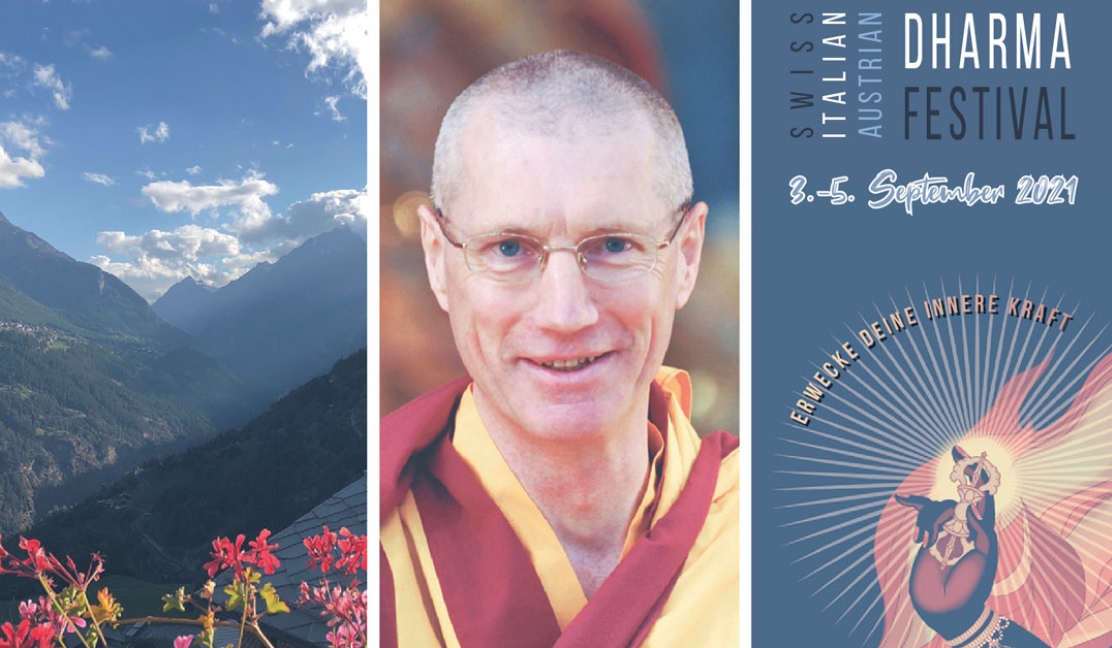Read an Excerpt from “The Making of American Buddhism”
An excerpt from Chapter 4 of The Making of American Buddhism by Scott A. Mitchell. Copyright © 2023 by Scott A. Mitchell provided courtesy of Oxford University Press. The post Read an Excerpt from “The Making of American Buddhism”...


This is an excerpt from Chapter 4 of The Making of American Buddhism by Scott A. Mitchell. Provided courtesy of Oxford University Press. We thank Oxford University Press for sharing this with Buddhadharma’s readers, and we thank our readers for supporting dharma publishers.
Famed Zen scholar D.T. Suzuki’s success in America was made possible in part by Mihoko Okamura. The Okamura family was incarcerated at Manzanar during the war and relocated to New York afterward. The father, Frank, was hired by the Brooklyn Botanic Garden to repair its Japanese garden, vandalized during the war. In doing so, he began a long and prolific career as a noted bonsai expert. The family often rented out a room in their Upper West Side brownstone to visitors from Japan, including D. T. Suzuki. Even before Suzuki lived with the Okamuras, however, Mihoko had already begun serving as his secretary and personal assistant, a role she played from 1953 until his death in 1966. “By all accounts, Okamura is recognized as Suzuki’s primary caretaker in his later years, looking after his administrative and personal needs and freeing the preoccupied scholar from these everyday concerns.”
Jane Iwamura, in her groundbreaking study of Asian representation in American media, Virtual Orientalism, notes that media representations during the 1950s and 1960s consistently portrayed Suzuki as “the model of a venerable Eastern sage—wise, noble, aged, and mysteriously foreign.” His image was widely circulated in popular magazines such as Newsweek and the New Yorker, where he was most often photographed in traditional Japanese attire even though he usually wore a sports coat and slacks. This image of Suzuki (and by extension Buddhism), Iwamura argues, was as important to Zen’s popularization in America as Suzuki’s writings. That is, it was precisely his image as an Oriental fantasy that attracted white American interest that helped to inaugurate the Zen boom of the 1950s and 1960s.
At the same time, media representations of Japanese American Buddhists were ambiguous at best. Mihoko Okamura, for example, is included in a 1957 profile of Suzuki published in the New Yorker, where she is presented as simultaneously exotic and domestic. Okamura is described as speaking English as well as “any American college girl”; the reporter compares her physical features and mannerisms to a geisha, but then quickly dismisses such comparisons as “purely romantic” before reassuring the reader that Okamura is “an American girl with ideas of her own, as well as a sound knowledge of typing and shorthand.” Iwamura shows that such a description limits Okamura’s role to that of Suzuki’s inferior assistant rather than his peer. That subordinate role is extended to the entire Okamura family as well; the New Yorker reporter remarks that Suzuki is staying at their home, that the father is a gardener, and that the mother makes Suzuki’s “favorite Japanese dishes,” comments that locate them squarely in the realm of the domestic, in stark contrast to the intellectual, scholarly, and Orientalized role in which Suzuki is cast. Finally, the reporter notes that the Okamuras aren’t Zen Buddhists themselves, but does not mention the Buddhist sect to which they belonged (Jōdo Shinshū).
Such renderings do a lot of discursive work. By labeling Okamura “an American girl,” she is separated from the exotic and foreign Suzuki and therefore portrayed as not his equal, not equally responsible for bringing Zen to America. But by reaffirming her “otherness,” her “almond eyes and porcelain complexion,” and her ability to speak clear English, she is rendered not fully American either. And by relegating the entire family to the role of caretakers and domestics, their labor is feminized as “women’s work” and thus devalued. In other words, while remaining not really American, they are also too American and not effectively contributing to this newfound fascination with Zen Buddhism brought to the United States by the exotic Asian other, D. T. Suzuki. In the American media imagination, Iwamura writes, “Japanese Americans are allowed to serve as able caretakers providing a comfortable environment for more authentic Buddhist representatives from Asia.”
Okamura is often elided in standard histories of American Buddhism, a background figure obscured by the presence of Suzuki (which, incidentally, can also be said of Suzuki’s wife, Beatrice, who helped translate his work in the interwar period). “In the narrative of the Oriental Monk, the character of the Japanese American will always be relegated to the supporting cast if she appears at all.” In this way, the relationship between Suzuki and Okamura is a synecdoche for white (mis)understandings of Buddhism and Japanese Americans. Attracted to the unfamiliar and the exotic, we are drawn to the idiosyncratic yet familiar approach to religion offered by the likes of Suzuki and other “Oriental Monk” figures while never quite knowing what to do with the familiar, the already American Buddhism of Okamura and other Asian American Buddhists. As an Oriental Monk figure, Suzuki is charged with bringing Asian wisdom to the West. He will be in need of an heir, and that heir will be Alan Watts. In this way the transmission of Buddhism from Asian missionary to white convert bypasses the Asian Americans who facilitated the connection.
In the 1950s, Suzuki was a well-known and frequent figure in American Shin Buddhist circles. He frequently gave lectures at the New York Shin temple, and he was among the speakers at the Berkeley Temple’s 1952 symposium alongside Alan Watts and others. And it was likely Jane Imamura, the wife of the temple’s resident minister Kanmo, who picked up Suzuki from the airport and brought him to Berkeley in the first place. Such acts of hospitality were common for bōmori, the wives of ministers. “Public relations was her domain,” Jane writes in her memoir, “which meant hosting the abundant guests, including chauffeuring them to and from the airport. Those were pre-freeway days when the stop-and-go traffic to the San Francisco airport meant almost a day’s trip.” This may seem a trivial act, a small contribution to a much larger life. But anyone who has landed in an airport after a very long flight to a country where you have but a slim grasp on the local language knows the feeling of gratitude at having a local there to meet you.
And let us return briefly to the Upper West Side brownstone and Mrs. Okamura’s cooking. Such acts of hospitality create safe spaces that can be of profound emotional or affective value. The comfort and familiarity of one’s “favorite Japanese dishes” is no small act; despite the adulation Suzuki may have been receiving from the New Yorker, he was still a foreigner, a person of color, in 1950s America. We need to humanize Suzuki the man and recognize the value of even these small acts of hospitality. This often unacknowledged labor is no less valuable than the more easily recognized (monetary) value of scholarly work. In other words, when Japanese American Buddhists are rendered merely as “able caretakers,” their contributions are devalued because they are representative of affective, immaterial, or unproductive labor—women’s work. However, without this labor, Suzuki would have been stranded at the airport, would have no safe haven in 1950s New York.
I would invite the reader to speculate, to imagine a history that could have been—to ask, what if? Even if he’d had a pocketful of cash from American philanthropists Charles and Cornelius Crane, how long would Suzuki have survived in the United States without the support of the Imamuras or the Okamuras? Perhaps his story would be more akin to that of Nyogen Senzaki. In Rudiger Busto’s “reconstructed Asian American version” of Senzaki’s early life in the United States, we are reminded that after the young immigrant was unable to either find work or establish himself as a Zen teacher, he met his (and Suzuki’s) teacher Shaku Sōen in Golden Gate Park in 1905. There Sōen famously said, “Just face the great city and see whether it conquers you or you conquer it.” Then followed decades of Senzaki looking for work up and down California, letting his hair grow out to avoid anti-Japanese discrimination, occasionally raising enough money to rent a hall to lead discussions on Zen or practice meditation—what he euphemistically called his “floating zendo”—and ultimately being one of the more than 120,000 Japanese and Japanese Americans incarcerated during World War II. Whereas hagiographies by his disciples and later white converts would cast these stories as “skillful means,” Busto’s retelling of his life reminds us that he was also a Japanese immigrant and that these innovations were as much about economic necessity as they were religion. Here, I argue that in the absence of the religious infrastructure built by Japanese American Buddhists, D. T. Suzuki’s fate in the 1950s might have been much the same. Unlike his dharma-brother Senzaki, Suzuki was buoyed by the Japanese American Buddhist community, who attended his lectures and considered themselves among his students, who picked him up from the airport, gave him a place to stay, facilitated financial transactions, and attended to his personal affairs. This labor—the labor of Japanese Americans and women—made things possible.

 Koichiko
Koichiko 































